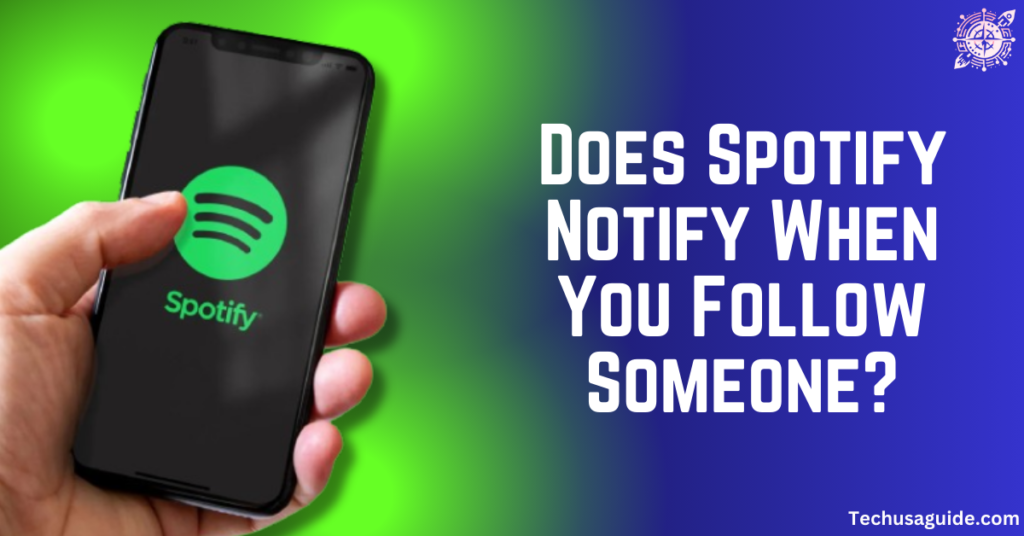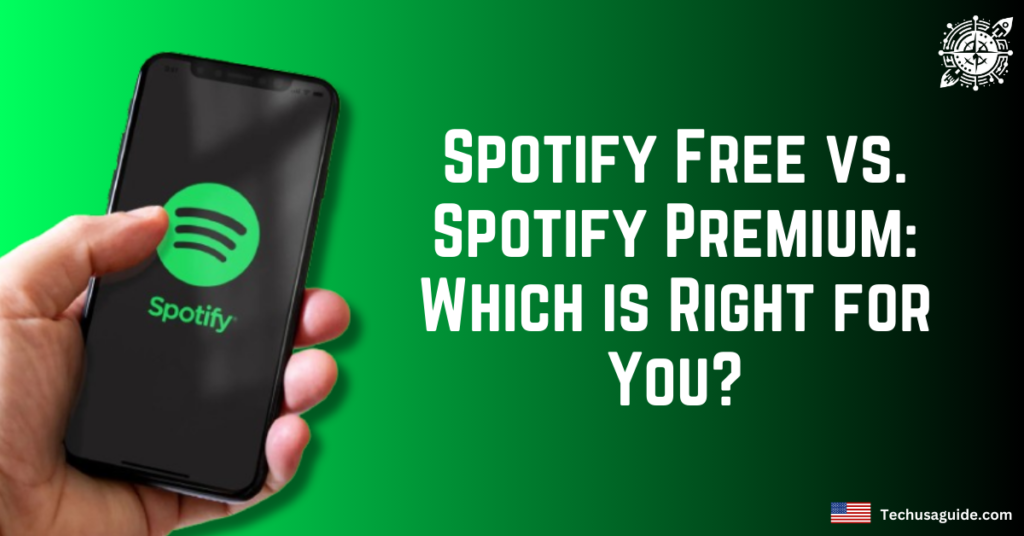Spotify has revolutionized the music streaming industry, offering an extensive library of songs, podcasts, and playlists. However, despite its popularity, Spotify has several disadvantages that are worth considering for music enthusiasts and tech-savvy users.
This guide explores these drawbacks in detail, providing an in-depth understanding to help you make informed decisions about using Spotify.
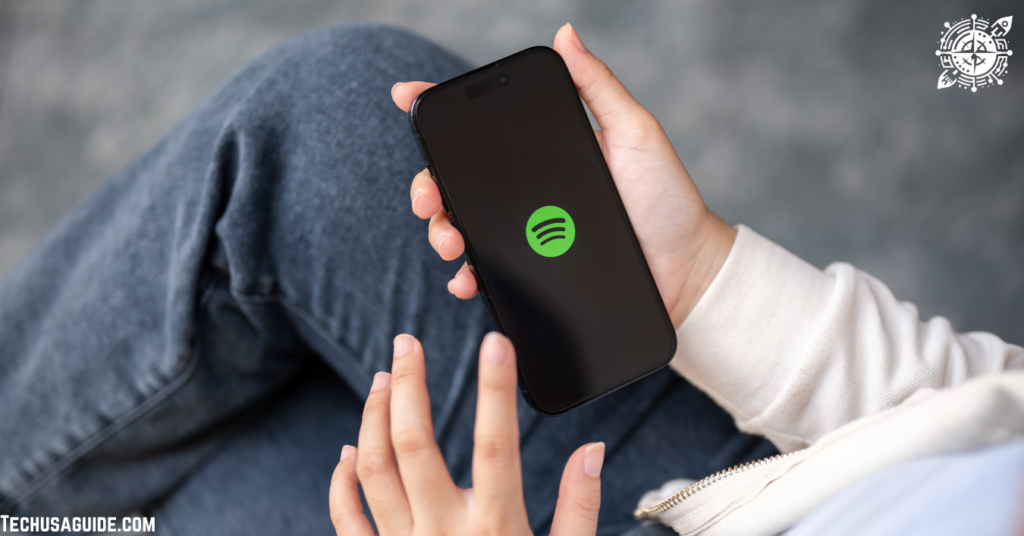
Key Takeaways
- Cost Considerations: Understand the financial implications of Spotify’s subscription plans and compare them to other services.
- Music Selection and Discovery: Learn about availability issues and potential shortcomings in Spotify’s recommendation algorithm.
- Audio Quality Concerns: Explore the limitations of Spotify’s audio quality settings and their impact on high-end equipment.
- User Experience Issues: Identify challenges with Spotify’s interface, navigation, and playlist management.
- Impact on Artists and the Music Industry: Examine the controversies around Spotify’s royalty payments and its effects on new artists.
- Privacy and Data Usage: Be aware of the data Spotify collects and how it influences targeted advertising.
- Device and Platform Limitations: Discover compatibility issues and restrictions on offline listening.
- Market Dominance and Consumer Choice: Understand how Spotify’s market presence affects music industry trends and consumer behavior.
- Social and Ethical Considerations: Review the potential impact on global music diversity and ethical concerns.
- Technical Issues and Downtime: Know the history of Spotify’s technical outages and common user problems.
- Limitations in Features and Innovation: Compare Spotify’s innovation pace with other music streaming services.
Cost Considerations
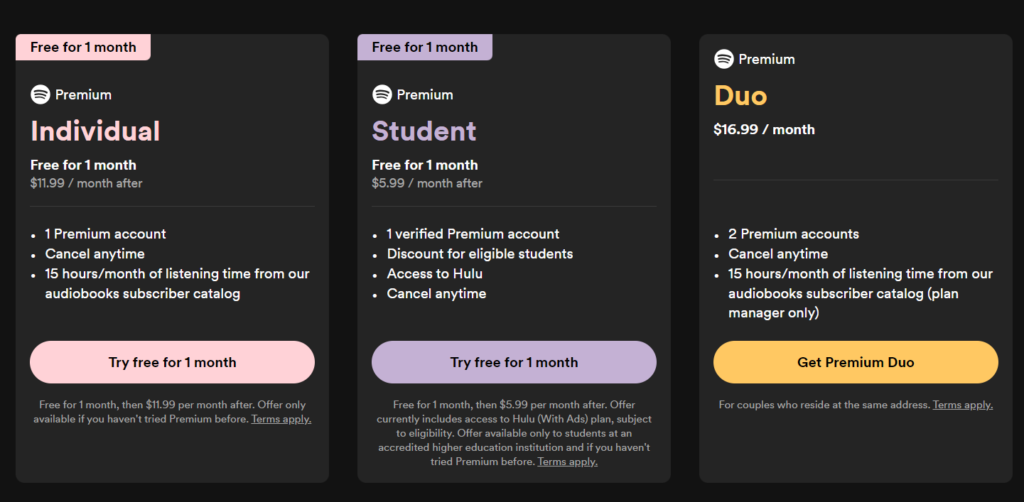
How much is Spotify Premium now?
Spotify offers various subscription plans, including Free, Premium, and Family plans. While the Free tier allows access to a vast music library, it comes with limitations such as ads and lower audio quality.
Spotify’s Premium plan is now $11.99 a month, up from $10.99 for an individual plan. Premium Duo is increasing to $16.99, up from $14.99, and Premium Family will be $19.99, up from $16.99.
Compared to other services like Apple Music and Amazon Music Unlimited, Spotify’s pricing is competitive but not always the most economical option. For instance, Amazon Music offers a similar family plan for $19.99 per month but includes additional benefits for Prime members.
Ads in the Free Version
One significant drawback of Spotify’s Free tier is the frequency of ads, interrupting the listening experience. Users encounter ads every few songs, which can be frustrating and disrupt the immersive experience Spotify aims to provide.
In comparison, services like YouTube Music offer less frequent ads on their free versions.
How can you remove ads on Spotify for free?
Consider using a Virtual Private Network (VPN) to enhance your Spotify experience by enjoying uninterrupted music without any ads. Typically, this method is effective for both computer and mobile devices. Simply choose a different region server on your VPN and then open Spotify to start streaming music.
Music Selection and Discovery
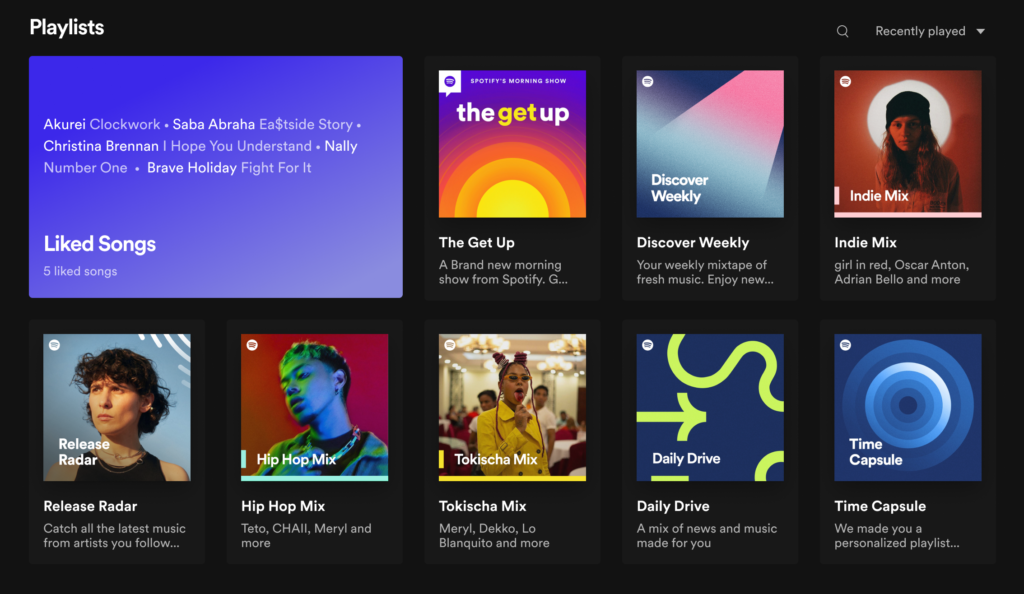
Availability of Artists and Tracks
Despite its extensive library, Spotify does not have every artist or track. Some artists, like Taylor Swift (previously), have withheld their music due to disputes over royalties.
Additionally, exclusive deals with other platforms may mean certain albums are unavailable on Spotify. This limitation can be frustrating for fans of specific artists and genres.
Algorithm and Personalization Issues
Spotify’s recommendation algorithm, while advanced, is not flawless. Some users find that the suggested playlists and tracks do not always match their tastes or preferences.
Discovery Weekly and Release Radar playlists may occasionally include irrelevant suggestions, reducing the effectiveness of the platform’s personalization efforts.
Audio Quality Concerns
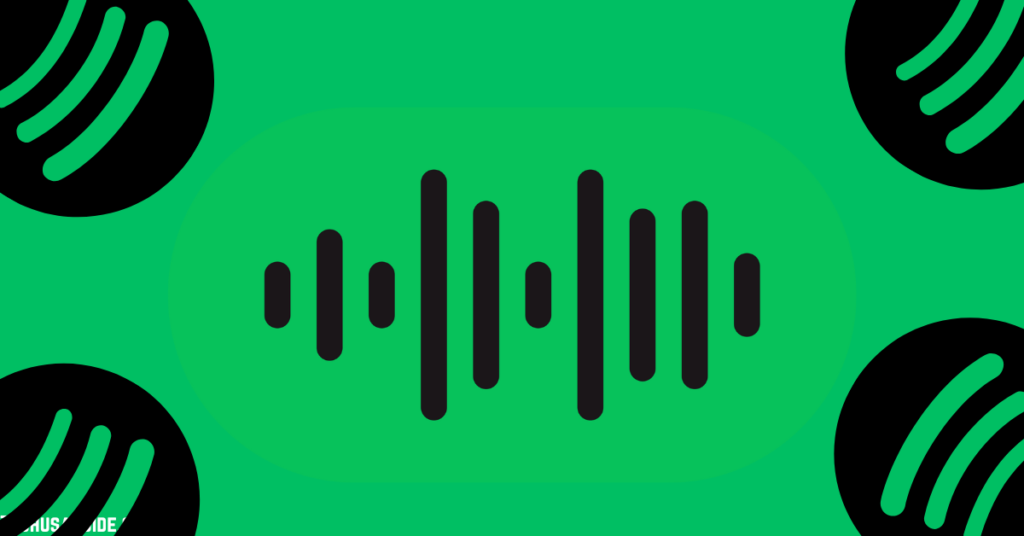
Limited Streaming Quality Options
Spotify Premium offers different streaming quality settings, with the highest being 320 kbps. While this is sufficient for most users, audiophiles may find it lacking compared to lossless audio services like Tidal and Amazon Music HD, which offer higher bitrates and better sound quality.
Impact on High-Quality Audio Equipment
Spotify’s compressed audio files can affect the listening experience on high-end audio equipment. The compression process reduces the depth and richness of the music, which is more noticeable on high-quality speakers and headphones.
Audiophiles and those with premium audio setups might find this a significant drawback.
User Experience Issues
Interface and Navigation Challenges
Spotify’s user interface has been criticized for its complexity and occasional lack of intuitiveness. Navigating through the app can be cumbersome, especially for new users.
Additionally, inconsistencies across different devices (e.g., mobile vs. desktop) can create a disjointed experience.
Playlist and Library Management
While Spotify allows users to create and share playlists, there are limitations. For example, there’s a cap on the number of songs a user can add to a single playlist (10,000 tracks). Managing large music libraries can also be challenging, as Spotify does not offer advanced organizational tools.
Impact on Artists and the Music Industry
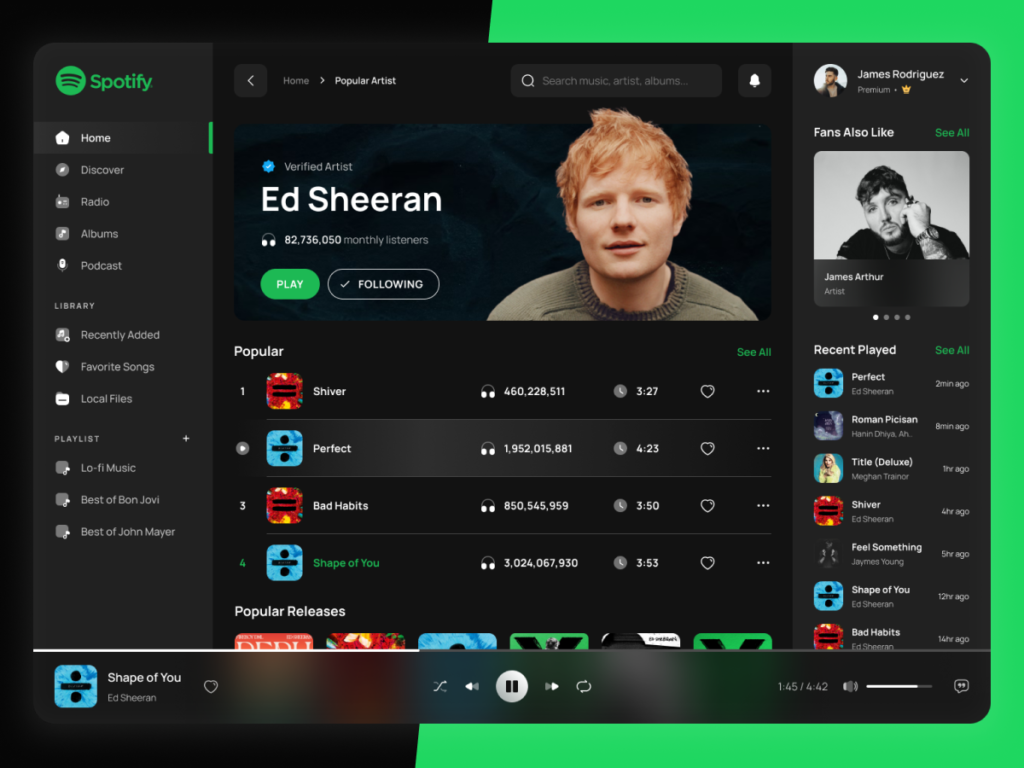
What is the Spotify royalty controversy?
Spotify has faced criticism over its royalty payments to artists. The amount paid per stream is relatively low, leading to concerns about fair compensation. Independent and emerging artists often struggle to earn significant revenue from the platform compared to major record label artists.
Effect on New Artists
Spotify’s algorithms tend to favor popular artists, making it challenging for new artists to gain visibility. While playlists like “Discover Weekly” aim to promote lesser-known artists, the overall competition is fierce, and many talented musicians remain undiscovered.
Privacy and Data Usage
Data Collection and Privacy Concerns
Spotify collects substantial user data, including listening habits, location, and device information. This data is used to personalize recommendations and target ads. While this can enhance the user experience, it raises privacy concerns, especially for those wary of extensive data tracking.
Targeted Advertising
In the Free tier, Spotify uses collected data to deliver targeted ads. While this makes the ads more relevant, it can also feel intrusive to users who prefer more privacy. Understanding how your data is used and the extent of data collection is crucial for informed usage.
Device and Platform Limitations
Compatibility Issues
Spotify may not be fully compatible with all devices and platforms. While it supports a wide range of devices, some users report issues with certain smart speakers, wearables, and older operating systems. These compatibility challenges can limit the overall usability of the service.
Offline Listening Restrictions
Offline listening is a key feature of Spotify Premium, allowing users to download songs and playlists for offline playback. However, there are limitations, such as a cap on the number of devices (three) and the need to reconnect to the internet every 30 days to maintain downloads.
These restrictions can be inconvenient for frequent travelers or those with limited internet access.
Market Dominance and Consumer Choice
Influence on Consumer Choices
Spotify’s dominance in the music streaming market influences industry trends and consumer behavior. While it offers a vast selection of music, its algorithms can create echo chambers, promoting popular tracks over niche genres. This can limit the diversity of music discovery for users.
Lack of Diversity in Music Consumption
Spotify’s focus on mainstream music can lead to a homogeneous listening experience. Independent and less popular artists may struggle to gain traction, resulting in reduced exposure and diversity in the music consumed by Spotify users.
This can impact the broader music ecosystem and limit opportunities for emerging talent.
Social and Ethical Considerations
Cultural Standardization
Spotify’s global reach and algorithmic recommendations can contribute to cultural homogenization. Popular Western music often dominates the platform, potentially overshadowing local and regional artists. This can lead to a diminished appreciation for diverse musical traditions and cultures.
Ethical Practices
Spotify has faced scrutiny over its business practices, including its handling of artist royalties and data privacy. Ethical concerns also extend to its partnerships and content policies. Users should be aware of these issues and consider the broader impact of their streaming choices.
Technical Issues and Downtime
Occurrences of Service Interruptions
Like any online service, Spotify has experienced technical outages and downtime. While these incidents are relatively rare, they can disrupt the listening experience and cause frustration for users. Understanding the history of such occurrences provides insight into the platform’s reliability.
Why is my Spotify glitching?
Users frequently report bugs and glitches within the Spotify app. Common issues include problems with playback, syncing, and app crashes. While Spotify regularly updates its software to address these problems, ongoing technical issues can detract from the overall user experience.
Limitations in Features and Innovation
Slow Roll-out of New Features
Spotify has been criticized for the slow introduction of new features compared to competitors. While the platform continuously evolves, some users feel it lags behind in implementing innovative functionalities that enhance the user experience.
Comparison with Other Innovators
Other music streaming services, such as Apple Music and Amazon Music, have introduced features like lossless audio, spatial audio, and enhanced integration with smart home devices. Comparing Spotify’s innovation pace with these competitors highlights areas where it may fall short.
FAQ
-
How does Spotify’s sound quality compare to lossless audio services?
Spotify’s maximum audio quality setting is 320 kbps, which is lower than lossless audio services like Tidal and Amazon Music HD that offer higher bitrates. Audiophiles may notice a difference in sound quality, particularly when using high-end audio equipment.
-
Does using Spotify drain the battery?
Streaming music and using the Spotify app can impact your device’s battery life, especially if you frequently stream high-quality audio or use features like offline playback. Managing settings and downloading music for offline use can help conserve battery life.
-
What are the biggest complaints users have about Spotify?
Common complaints about Spotify include frequent ads in the Free tier, limitations in music availability, excessive ads, laggy performance, personalization issues with the recommendation algorithm, and technical bugs or glitches within the app.
-
How safe is my personal information on Spotify?
Spotify collects user data for personalization and targeted advertising. While the company has measures to protect user data, privacy concerns remain. Users should review Spotify’s privacy policy and settings to understand how their data is used and take steps to enhance their privacy.
-
Why do some artists not use Spotify?
Artists may choose not to put their music on Spotify due to disputes over royalties and revenue distribution. Some artists feel that the compensation provided by Spotify is insufficient compared to other platforms or traditional sales.
Conclusion
Spotify offers a wealth of features and a vast music library, but it is not without its drawbacks. From cost considerations to privacy concerns, understanding these disadvantages can help you make an informed decision about whether Spotify is the right music streaming service for you.
By being aware of these potential issues, you can better navigate the platform and maximize your listening experience.
You Might Also Like the following:
- How do I get Fortnite on the Nintendo Switch?
- Lenovo IdeaPad Flex 5i 14 Review (2024)
- Top 10 Best Mechanical Keyboards 2024
- Panasonic Toughbook 55 Mk3 Review – 2024
- What specs should you look for in a gaming PC?
- What Is the Best Chair for Sitting Long Hours?
- Best UPS Battery Backups of 2024


